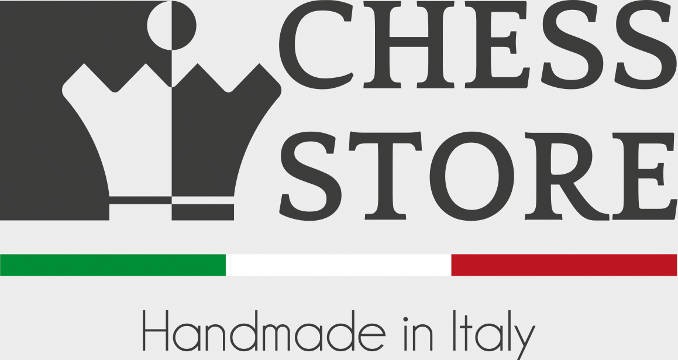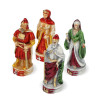The Maritime Republics Regatta
Published :
06/18/2019 19:05:23
Categories :

THE HISTORY OF THE MARITIME REPUBLICS
The Regatta of the Maritime Republics was strongly supported by the four municipal administrations in 1956 and is held on a rotating basis in the four cities as recalling of the famous enterprises and the splendours of their glorious medieval past.
The first edition was held in Pisa on July 1 of that year, and since then, every twelve months, the race is revived in the sea waters of Amalfi and Genoa, on the river Arno in Pisa and in the lagoon of Venice. enterprise Before the race takes place an imposing parade with costumes, consisting of 320 persons (80 for each republic).
The parade evokes events and characters in the story of the four maritime cities, which in the Middle Ages, had obtained prosperity and could exploit to their advantage the watercourses, commercially and militarily dominating the Mediterranean Sea.
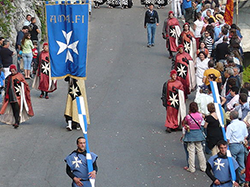 The Parade of Amalfi depicts the society at the time of its greatest splendor at the beginning of the eleventh century. In particular, it represented the marriage of the son of the Duke, the highest citizen during that time, and the noblewoman of Salerno Regale, marking 'the beginning of this glorious period for the city'.
The Parade of Amalfi depicts the society at the time of its greatest splendor at the beginning of the eleventh century. In particular, it represented the marriage of the son of the Duke, the highest citizen during that time, and the noblewoman of Salerno Regale, marking 'the beginning of this glorious period for the city'.
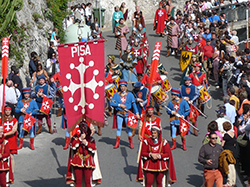 The historical parade of Pisa reminds the legend of the pisan hero Kinzica de 'Sismondi, which according to the saying, saved Pisa from the invasion of Saracen pirates. You can also distinguish the mayor, the captain of the people and other figures that followed the leadership of the city.
The historical parade of Pisa reminds the legend of the pisan hero Kinzica de 'Sismondi, which according to the saying, saved Pisa from the invasion of Saracen pirates. You can also distinguish the mayor, the captain of the people and other figures that followed the leadership of the city.
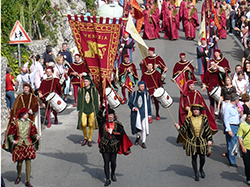 In the parade of Venice you clearly recognize the figure of the Doge, together with Caterina Cornaro, Queen of Cyprus and the senators of the city and to the ambassadors of the time. The episode here is in fact the donation of the island of Cyprus to the city by the noblewoman.
In the parade of Venice you clearly recognize the figure of the Doge, together with Caterina Cornaro, Queen of Cyprus and the senators of the city and to the ambassadors of the time. The episode here is in fact the donation of the island of Cyprus to the city by the noblewoman.
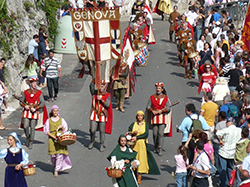 Genoa in his parade evokes the period pre-doge, the battle of the First Crusade, during which the leader Guglielmo Embriaco guided the fleet of Genoa; in the parade you see also the one who made us to know the gestureof Embriaco, Caffaro of Caschifellone.
Genoa in his parade evokes the period pre-doge, the battle of the First Crusade, during which the leader Guglielmo Embriaco guided the fleet of Genoa; in the parade you see also the one who made us to know the gestureof Embriaco, Caffaro of Caschifellone.
THE TEAMS OF THE MARITIME REPUBLICS
Each boat is painted with the colors of their city and the prow is characterized by several figureheads, the same as in the first edition of the fifties.
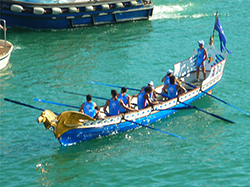 The boat of Amalfi is blue and the figurehead depicts the Winged horse. Amalfi chess pieces
The boat of Amalfi is blue and the figurehead depicts the Winged horse. Amalfi chess pieces
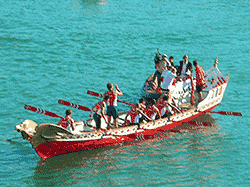 The pisan one is red and has an eagle ( in memory of the bond between the republic of Pisa and the holy roman empire). Pisa chess pieces
The pisan one is red and has an eagle ( in memory of the bond between the republic of Pisa and the holy roman empire). Pisa chess pieces
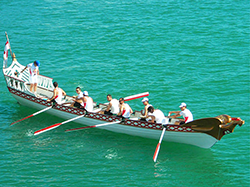 The white boat of Genoa has a dragon (or Griffin) and reminds us of the patron saint of the city of Liguria, that is San Giorgio. Genoa chess
The white boat of Genoa has a dragon (or Griffin) and reminds us of the patron saint of the city of Liguria, that is San Giorgio. Genoa chess
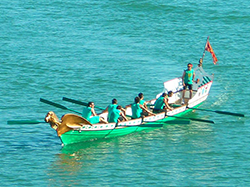 The green boat of Venice shows the winged lion on the figurehead, which reminds us of St. Mark the Evangelist. Venezia's Chess
The green boat of Venice shows the winged lion on the figurehead, which reminds us of St. Mark the Evangelist. Venezia's Chess
THE RACE OF THE MARITIME REPUBLICS TODAY
The event consists of a rowing race, which takes place in the waters of the four maritime cities along a ritch of 2000 meters. Amalfi framed by the Tyrrhenian Sea, the race takes place along the Amalfi Coast; in Genoa, the Ligurian Sea, the rowing regatta takes place within the harbor, and in the lagoon waters of the Adriatic Sea the Regatta of Venice. The waters of he race of Pisa are those of the Arno river that runs through the town.
The crew of each city consists of eight rowers and a coxswain. Also the boats, first in wood now all in fiberglass as well as the figureheads, have to follow precise rules of construction and girth: at the beginning of each competition there are subjected to weightings to verify its correctness. The trophy, that wins the Republic who first plows the finish, is made of gold and silver by master goldsmiths in Florence: every year, for each edition, is added the medal of the Winner of the city that can keep the prize until the next edition, when it is placed back in the Palio.


 Italiano
Italiano Deutsch
Deutsch